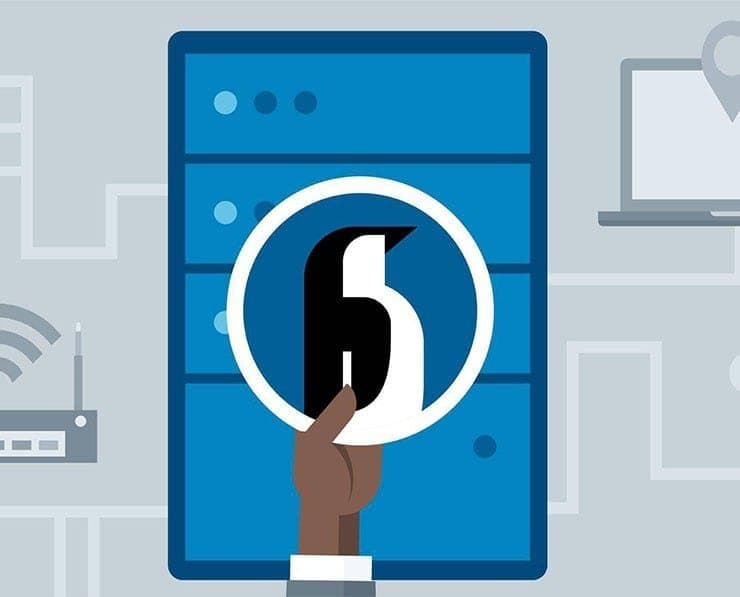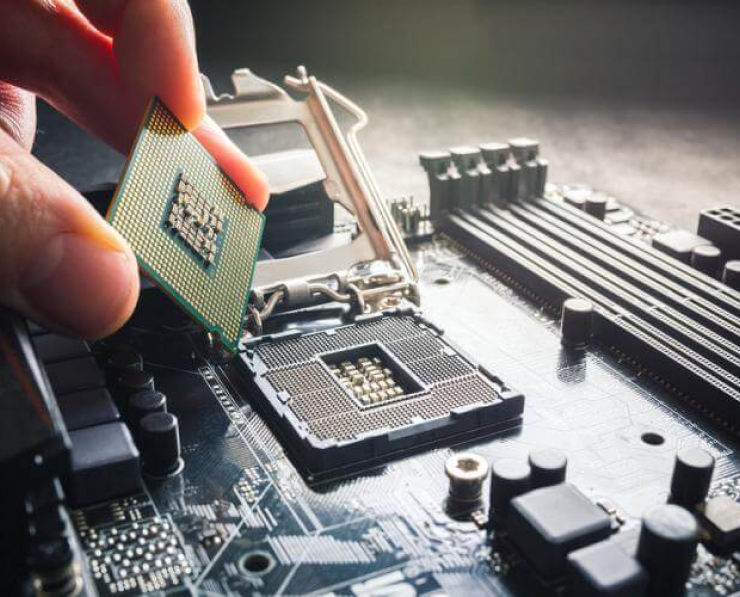Student Feedback
220-1002: CompTIA A+ Certification Exam: Core 2 Certification Video Training Course Outline
All About the CompTIA A+ 2019 Co...
Book Chapter 1 - Safety and Prof...
Book Chapter 2 - The Visible Com...
Book Chapter 3 - CPUs
Book Chapter 4 - RAM
Book Chapter 7 - Power Supply
Book Chapter 9 - Implementing Ma...
Book Chapter 11 - Building a PC
Book Chapter 12 - Windows Under ...
Book Chapter 13 - Users, Groups,...
Book Chapter 14 - Maintaining an...
Book Chapter 15 - Working with t...
Book Chapter 16 - Troubleshootin...
Book Chapter 17 - Display Techno...
Book Chapter 18 - Essentials of ...
Book Chapter 19 - Local Area Net...
Book Chapter 20 - Wireless Netwo...
Book Chapter 21 - The Internet
Book Chapter 23 - Portable Compu...
Book Chapter 25 - Care and Feedi...
Book Chapter 27 - Securing Compu...
Book Chapter 28 - Operational Pr...
All About the CompTIA A+ 2019 Core 2 Exam
220-1002: CompTIA A+ Certification Exam: Core 2 Certification Video Training Course Info
[220-1002] CompTIA Cloud+ (CVO-001) Online Training: Cloud Management and Security Skills
Sharpen your knowledge with 5 practice exams and successfully clear the official CompTIA A+ certification tests.
What You Will Learn From This Course
• Master over 110 hand-picked practice questions and answers for the [220-1002] CompTIA A+ Certification Exam: Core 2
• Gain in-depth knowledge of operating systems, security, networking, and troubleshooting concepts
• Develop the skills to confidently handle technical support tasks in real-world scenarios
• Learn how to manage endpoints, including desktops, laptops, and mobile devices
• Understand virtualization, cloud computing, and emerging technologies in IT support
• Build problem-solving skills to effectively identify and resolve IT issues under pressure
• Prepare for the multiple choice and performance-based questions on the exam
• Achieve a high pass rate on the exam by reinforcing practical knowledge through repeated practice
• Boost confidence in your technical skills, enabling better career advancement in IT support and management
• Learn exam strategies and tips to improve accuracy and reduce errors on test day
Learning Objectives
• Understand the structure and format of the [220-1002] CompTIA A+ Certification Exam: Core 2
• Gain expertise in installing, configuring, and maintaining operating systems including Windows, macOS, Linux, and mobile OS
• Learn to secure devices and networks against common threats using best practices in cybersecurity
• Master troubleshooting methods for hardware, software, and network issues
• Acquire skills in virtualization and cloud-based technologies relevant to IT support roles
• Understand networking fundamentals including TCP/IP, Wi-Fi, routers, switches, and IP addressing
• Gain hands-on knowledge of endpoint management, including imaging, deployment, and backup solutions
• Improve time management and problem-solving skills required for performance-based tasks
• Learn to analyze system logs, identify errors, and implement solutions efficiently
• Build confidence in passing the exam through repeated practice and self-assessment
Target Audience
• Individuals preparing to take the [220-1002] CompTIA A+ Certification Exam: Core 2
• IT support professionals seeking to validate their skills and gain industry-recognized certification
• Recent graduates looking to start a career in IT technical support, desktop support, or help desk roles
• IT technicians aiming to expand their knowledge in security, networking, and endpoint management
• Professionals seeking to enhance their problem-solving and troubleshooting skills in real-world IT environments
• Individuals aiming for higher-paying roles in IT support, technical troubleshooting, and endpoint management
• Anyone interested in gaining a globally recognized credential to boost career opportunities in technology
• People looking for hands-on practical skills in IT support to complement theoretical knowledge
• Individuals who want to build confidence in performing technical support tasks before attempting the certification exam
• Career changers entering IT who want structured guidance and practice in passing CompTIA A+ exams
Requirements
• A computer or laptop with internet access to access the course material and practice tests
• Basic familiarity with computers and operating systems to follow along with the lessons
• A willingness to learn and practice regularly to reinforce knowledge and skills
• Time commitment to review questions, study concepts, and take practice exams consistently
• Access to basic networking equipment or virtual labs for hands-on troubleshooting practice
• Optional access to Windows, macOS, or Linux systems for real-world practice with operating system tasks
• Note-taking tools or software to track progress, exam strategies, and important concepts
• Curiosity and motivation to understand IT fundamentals and industry best practices
• Commitment to revisit challenging questions and review explanations for improved understanding
• Willingness to apply learned concepts in practical scenarios to prepare for performance-based questions
Prerequisites
• No prior certification is required to take this course; it is designed for beginners and intermediate learners
• Familiarity with basic computer operations such as installing software, navigating file systems, and configuring settings can be helpful
• Understanding basic networking concepts, including Wi-Fi, IP addresses, and routers, is advantageous but not mandatory
• Exposure to common hardware components like CPUs, RAM, storage drives, and peripheral devices can aid learning
• Basic understanding of software applications and troubleshooting simple computer problems can improve course efficiency
• Willingness to learn and follow instructions carefully is essential to gain maximum benefit from the practice tests
• Motivation to study consistently and practice regularly to reinforce knowledge
• Ability to use online resources and virtual labs for hands-on learning and exam preparation
• Commitment to dedicate focused time to complete all practice questions and review explanations thoroughly
• Open mindset to learning modern IT support concepts, security protocols, and endpoint management procedures
This course is structured to ensure that learners progress from foundational IT concepts to advanced troubleshooting and exam-ready skills. By engaging with the material, practicing the 110+ questions, and understanding the explanations, students will develop the confidence and ability to perform real-world IT support tasks. Through repeated exposure to exam-style questions, learners build a practical understanding of hardware, software, networking, security, and endpoint management that is essential for the CompTIA A+ [220-1002] Certification Exam: Core 2.
The course emphasizes both conceptual understanding and hands-on application. Learners will practice tasks that mimic real-world IT challenges, such as configuring operating systems, managing networks, troubleshooting hardware failures, and securing devices against potential threats. This dual focus ensures not only exam readiness but also practical IT competence, which employers highly value.
Course Modules / Sections
This course is carefully structured into comprehensive modules to ensure a progressive and systematic learning experience. Each section focuses on key areas relevant to the [220-1002] CompTIA A+ Certification Exam: Core 2, enabling learners to gain both theoretical knowledge and practical skills.
The first module introduces operating systems fundamentals, including installation, configuration, and management of Windows, macOS, Linux, and mobile operating systems. Learners will understand file systems, OS architecture, and essential administrative tasks, gaining confidence in performing routine operations and troubleshooting common issues.
The second module focuses on networking essentials. It covers wired and wireless networks, IP addressing, DHCP, DNS, routers, switches, and basic network troubleshooting techniques. This module equips learners to manage connectivity issues, optimize network performance, and secure networks effectively.
The third module dives into security concepts and practices. Learners explore cybersecurity fundamentals, including authentication, authorization, malware, social engineering, and endpoint protection. This section emphasizes hands-on approaches to safeguard devices, networks, and sensitive data against potential threats.
The fourth module addresses hardware and peripheral devices. Learners gain practical knowledge about CPUs, memory, storage devices, expansion cards, printers, and peripheral connectivity. They will learn installation procedures, configuration techniques, and troubleshooting strategies for physical components.
The fifth module emphasizes virtualization and cloud computing. It introduces learners to virtual machines, cloud services, deployment methods, and maintenance tasks. Learners will understand how virtualization supports IT efficiency and how cloud platforms impact modern IT environments.
The sixth module focuses on operational procedures and best practices. This includes documentation, change management, disaster recovery, environmental controls, and safety protocols. Learners will learn to manage IT operations while maintaining professional and compliant practices.
The seventh module is dedicated to practical exam preparation. It combines review sessions, scenario-based exercises, and timed practice tests. Learners reinforce their knowledge, gain familiarity with the exam format, and develop strategies to manage time and accuracy during the test.
Each module includes detailed explanations, step-by-step instructions, and practice scenarios that reflect real-world IT challenges. This structured approach ensures learners not only memorize facts but also apply knowledge effectively to technical problems and exam scenarios.
Key Topics Covered
The course covers a wide range of topics aligned with the CompTIA A+ [220-1002] Core 2 exam objectives, ensuring that learners are thoroughly prepared for every aspect of the exam.
Operating systems form a major focus, including installation, configuration, updates, system tools, and troubleshooting procedures. Windows features, command-line tools, macOS utilities, Linux commands, and mobile operating system management are included. Learners will also study system recovery options, virtual environments, and operating system optimization techniques.
Networking concepts are explored in depth, including TCP/IP protocols, IP addressing schemes, subnetting, DNS, DHCP, NAT, and VPN configuration. Wireless network setup, security protocols such as WPA/WPA2/WPA3, and troubleshooting network connectivity issues are also emphasized. Learners gain the skills to identify network bottlenecks, configure devices, and maintain reliable connections.
Security topics cover malware identification, endpoint protection, encryption, access controls, and authentication methods. Social engineering threats, phishing attacks, and security policy implementation are addressed. Learners are taught to implement preventive measures, respond to incidents, and maintain data confidentiality and integrity.
Hardware and peripheral devices are addressed extensively. Topics include installation and configuration of CPUs, RAM, storage drives, motherboards, expansion cards, printers, scanners, and other peripherals. Troubleshooting strategies for hardware failures, compatibility issues, and performance optimization are thoroughly discussed.
Virtualization and cloud computing topics include virtual machine creation, resource allocation, cloud deployment models, and management of cloud services. Learners will understand the advantages of virtualization, scalability of cloud platforms, and best practices for maintaining secure and efficient virtual environments.
Operational procedures cover IT documentation, disaster recovery planning, environmental controls, professional communication, and safety protocols. Learners learn to maintain proper documentation, follow standard operating procedures, and implement best practices to minimize downtime and risks.
The course also includes exam preparation topics, with focus on multiple-choice questions, scenario-based exercises, and timed practice tests. Test-taking strategies, question analysis techniques, and time management skills are emphasized to improve exam performance.
By covering these key topics, the course ensures learners are prepared for both theoretical knowledge assessments and practical, real-world IT scenarios.
Teaching Methodology
The teaching methodology of this course combines theory, practice, and exam-focused strategies to ensure effective learning. Each lesson is designed to provide clear explanations, step-by-step instructions, and practical demonstrations that replicate real-world IT tasks.
The course uses an interactive learning approach, allowing learners to apply concepts immediately through practice questions, exercises, and scenario-based simulations. This hands-on method reinforces knowledge, enhances problem-solving skills, and builds confidence in performing technical support tasks.
Video lectures are structured to explain concepts in a simple, easy-to-understand format. Complex topics such as networking, security, and virtualization are broken down into manageable segments, enabling learners to grasp difficult concepts without feeling overwhelmed.
Regular practice tests and self-assessment exercises are integrated throughout the course. Learners receive instant feedback and detailed explanations for each answer, helping them understand mistakes, correct misconceptions, and reinforce key concepts.
Scenario-based learning is a core aspect of the methodology. Learners are presented with real-world IT challenges, such as troubleshooting a network outage, resolving operating system errors, or securing a compromised endpoint. This approach allows learners to apply theoretical knowledge in practical situations, preparing them for performance-based questions on the exam.
The course also emphasizes repetition and review. Learners revisit critical concepts multiple times through exercises, quizzes, and practice exams. This repetition helps solidify understanding and ensures knowledge retention over time.
Instructional materials are designed to be accessible and comprehensive, including visual demonstrations, guided exercises, and detailed explanations. Learners can progress at their own pace, revisiting lessons as needed to fully grasp challenging concepts.
The teaching methodology ensures that learners not only memorize information but also develop analytical thinking, troubleshooting skills, and confidence to handle complex IT tasks effectively.
Assessment & Evaluation
Assessment and evaluation are integral components of this course to measure learner progress and ensure readiness for the CompTIA A+ [220-1002] exam. The course employs a variety of evaluation methods to provide comprehensive feedback.
Practice exams are a primary assessment tool. Learners engage with over 110 carefully selected multiple-choice and scenario-based questions designed to simulate the actual exam experience. These tests help learners identify areas of strength and weakness while familiarizing them with the exam format and time constraints.
Instant feedback is provided for each practice question, including detailed explanations of correct and incorrect answers. This helps learners understand the reasoning behind each response, correct mistakes, and reinforce their knowledge.
Scenario-based exercises are used to evaluate practical skills. Learners troubleshoot real-world IT issues, configure operating systems, manage networks, and implement security measures. These exercises assess the learner’s ability to apply knowledge in practical situations, mirroring the performance-based components of the official exam.
Progress tracking allows learners to monitor improvement over time. Detailed analytics show performance trends, helping learners focus on areas that need additional practice. This data-driven approach ensures efficient use of study time and maximizes exam readiness.
Periodic reviews and timed assessments help learners build test-taking stamina and confidence. By practicing under conditions similar to the actual exam, learners reduce anxiety and improve their ability to manage time effectively during the test.
Final evaluations combine practice tests, scenario exercises, and self-assessment quizzes to provide a holistic measure of readiness. Learners completing the course gain confidence in their ability to perform both theoretical and practical tasks required by the CompTIA A+ [220-1002] Certification Exam: Core 2.
The assessment methodology ensures that learners are not only prepared to pass the exam but also equipped with practical IT skills applicable in professional technical support roles. This approach bridges the gap between certification knowledge and real-world IT competency, making learners valuable assets to employers.
Benefits of the Course
This course provides a comprehensive pathway for learners seeking to achieve the [220-1002] CompTIA A+ Certification Exam: Core 2 and gain practical IT skills. By completing this course, learners will acquire a strong foundation in operating systems, networking, security, and troubleshooting that is essential for modern IT support roles.
One of the primary benefits is exam readiness. Learners gain exposure to over 110 practice questions that mirror the format and difficulty of the official certification exam. This targeted practice allows learners to identify knowledge gaps, improve problem-solving skills, and increase confidence when approaching the actual test. Regular feedback and explanations for each question ensure that learners not only memorize answers but also understand underlying concepts.
Another significant benefit is hands-on skill development. The course emphasizes practical exercises that simulate real-world IT scenarios, such as configuring operating systems, troubleshooting network issues, and securing endpoints. This practical focus ensures learners are prepared for both performance-based exam tasks and workplace challenges, bridging the gap between theory and practice.
Learners also benefit from structured learning. The course modules are organized to build knowledge progressively, starting from foundational IT concepts and advancing to complex topics such as virtualization, cloud computing, and endpoint management. This structured approach allows learners to absorb information systematically and retain key concepts effectively.
The course improves career prospects by equipping learners with an industry-recognized credential. CompTIA A+ certification is widely recognized by employers around the world and is frequently listed as a requirement for technical support, help desk, and IT support roles. Completion of this course signals to employers that the learner possesses the knowledge, skills, and problem-solving ability necessary to perform in professional IT environments.
Time efficiency is another advantage. Learners can study at their own pace, focusing on areas where they need additional practice. Online access to the course allows flexibility, enabling learners to fit study sessions into their schedules without compromising other responsibilities.
The course also strengthens critical thinking and analytical skills. Through scenario-based exercises and troubleshooting tasks, learners develop the ability to identify issues, analyze potential causes, and implement effective solutions. These skills are transferable to a wide range of IT support and technical roles, enhancing overall job performance.
Confidence building is an additional benefit. Consistent practice and repeated exposure to exam-style questions help learners feel prepared and self-assured when taking the certification exam. This confidence extends to real-world IT tasks, where learners are better equipped to address technical challenges efficiently and professionally.
Finally, learners gain access to comprehensive support and resources, including updated questions, detailed explanations, and practical guidance. This ensures that the knowledge acquired is current, relevant, and aligned with industry standards, providing a solid foundation for both certification success and ongoing career development.
Course Duration
The course is designed to accommodate learners at different levels of experience and schedules, with a duration that ensures comprehensive coverage of all exam objectives. On average, learners can expect to dedicate approximately 20 to 25 hours to complete the full course. This duration includes video lectures, practice exercises, scenario-based tasks, and review sessions.
Each module is structured to allow learners to progress at their own pace, providing flexibility to spend more time on challenging topics and quickly move through familiar areas. The practical exercises and practice questions are integrated throughout the course, ensuring continuous engagement and reinforcement of key concepts.
For learners with limited time, the course can be completed over a few weeks by dedicating short daily study sessions. For those seeking a more immersive experience, the course can be completed in an intensive study schedule over several days. The self-paced nature of the course ensures that learners can balance study time with professional or personal commitments without compromising learning outcomes.
The duration is sufficient to cover all essential topics in operating systems, networking, security, hardware, virtualization, cloud computing, and IT operational procedures. Practice questions and scenario-based exercises are distributed throughout the course to reinforce learning and ensure retention of critical information.
Additionally, the course encourages learners to review difficult concepts multiple times, which may extend the duration for those aiming for complete mastery. The combination of structured lessons, interactive practice, and self-assessment ensures that learners are fully prepared to take the [220-1002] CompTIA A+ Certification Exam: Core 2.
Tools & Resources Required
To gain the most from this course, learners need access to a few essential tools and resources. A reliable computer or laptop with stable internet access is required to view video lectures, access practice exams, and complete interactive exercises.
Familiarity with basic operating systems such as Windows, macOS, or Linux is recommended to follow along with practical exercises. Access to these systems, either physically or via virtual machines, allows learners to perform installation, configuration, and troubleshooting tasks as part of the learning process.
Basic networking equipment, such as routers, switches, and access points, is helpful but not mandatory. Virtual labs and simulation software can provide an equivalent experience for learners who do not have access to physical hardware. Hands-on practice with networking configurations, IP addressing, and Wi-Fi setup enhances understanding and prepares learners for performance-based exam tasks.
Software tools for monitoring system performance, troubleshooting, and security testing are also useful. These may include system diagnostic utilities, antivirus programs, network analyzers, and virtualization software. Using these tools in practice exercises helps learners apply theoretical knowledge in practical scenarios.
Access to digital note-taking tools or software is recommended to track progress, highlight important concepts, and summarize explanations for practice questions. Maintaining organized notes aids in review and revision before the certification exam.
Updated reference materials, such as CompTIA A+ exam objectives and official documentation for operating systems and networking protocols, provide additional support. These resources ensure learners are aligned with current industry standards and best practices.
Finally, learners benefit from a willingness to engage actively with the course content, dedicate time to practice regularly, and follow step-by-step guidance in exercises. A motivated and disciplined approach maximizes the value of the course and ensures readiness for the certification exam.
By combining these tools and resources with structured lessons, interactive practice, and repeated exposure to exam-style questions, learners will gain the skills, knowledge, and confidence needed to successfully achieve the [220-1002] CompTIA A+ Certification Exam: Core 2 and excel in IT support roles.
Career Opportunities
Completing the [220-1002] CompTIA A+ Certification Exam: Core 2 opens up a wide range of career opportunities in IT support and technical roles. Certified professionals are highly valued by employers for their ability to manage hardware, software, networks, and security in various business environments.
One of the primary career paths for CompTIA A+ certified professionals is technical support or help desk roles. In these positions, individuals provide first-level support for end users, troubleshoot hardware and software issues, configure systems, and maintain networks. A+ certification demonstrates competence in these essential IT tasks, making candidates highly competitive for help desk positions.
Desktop support technician roles are another common opportunity. These professionals handle on-site and remote support for desktop computers, laptops, and peripheral devices. Responsibilities include system installation, updates, maintenance, and problem resolution. The skills gained from this course, including operating system management and troubleshooting, prepare learners to excel in these roles.
IT support specialists and field service technicians benefit from CompTIA A+ certification as well. These positions often require technical knowledge across multiple domains, including networking, security, virtualization, and cloud technologies. Certified professionals are capable of managing complex IT environments, providing guidance to users, and ensuring optimal system performance.
Network support technician roles are also accessible to CompTIA A+ certified professionals. While additional networking certifications may enhance career prospects, A+ certification provides foundational knowledge in network configuration, TCP/IP protocols, wireless technologies, and troubleshooting. These skills are essential for maintaining reliable and secure network infrastructure.
Security-related positions are increasingly available for A+ certified professionals. Understanding malware, endpoint protection, authentication, and access controls prepares individuals for entry-level roles in cybersecurity support. Employers recognize A+ certification as a baseline credential that demonstrates both technical competence and awareness of security best practices.
Another area of opportunity is in mobile device support and management. Organizations increasingly rely on mobile devices, and certified professionals are equipped to configure, maintain, and troubleshoot mobile operating systems and devices, ensuring consistent performance and security.
Career advancement opportunities include system administrator, IT coordinator, and IT analyst roles. While additional experience and certifications may be required for higher-level positions, CompTIA A+ certification provides the foundational skills and industry recognition necessary to pursue these roles successfully.
Beyond technical positions, CompTIA A+ certification enhances professional credibility and marketability. Employers often prioritize certified candidates for promotions, project leadership, and specialized assignments. The certification signals a commitment to professional development, continuous learning, and technical excellence.
Freelance and contract opportunities are also available. Certified professionals can offer IT support services to small businesses, startups, and individual clients. Skills in troubleshooting, network setup, and endpoint management enable independent work and consulting opportunities, expanding career flexibility.
Overall, completing this course and achieving CompTIA A+ certification equips learners with practical, in-demand skills that are highly sought after in the IT job market. It lays the groundwork for a rewarding career with multiple pathways for growth and specialization.
Conclusion
The [220-1002] CompTIA A+ Certification Exam: Core 2 is a crucial credential for anyone seeking to establish or advance a career in IT support. This course provides a comprehensive, structured approach to mastering the knowledge and skills required to succeed in the exam and in professional IT environments.
Learners benefit from over 110 carefully curated practice questions, scenario-based exercises, and hands-on guidance that mirror real-world IT challenges. The course emphasizes both conceptual understanding and practical application, ensuring that learners are prepared for performance-based tasks and multiple-choice exam questions.
By following the course modules, learners gain proficiency in operating systems, networking, security, hardware management, virtualization, and cloud computing. The structured learning path allows for progressive skill development, ensuring that foundational concepts are mastered before advancing to complex topics.
The teaching methodology, which combines video lectures, interactive exercises, and regular self-assessment, reinforces knowledge retention and builds problem-solving skills. Learners are guided to apply theoretical knowledge to practical scenarios, boosting confidence and exam readiness.
Assessments throughout the course provide valuable feedback, helping learners identify areas of improvement and track their progress. Scenario-based exercises and timed practice tests simulate real exam conditions, enabling learners to refine strategies, manage time effectively, and reduce errors on test day.
The course also emphasizes career readiness. Skills gained from this training are directly applicable to a variety of IT support roles, including help desk, desktop support, network support, and cybersecurity entry-level positions. By completing this course, learners position themselves for success in a competitive job market.
Furthermore, CompTIA A+ certification is globally recognized and respected by employers, providing learners with an advantage in securing desirable IT positions. The knowledge and confidence gained from this course empower professionals to perform technical tasks efficiently, troubleshoot complex problems, and contribute effectively to organizational IT operations.
In conclusion, this course is a comprehensive solution for anyone aiming to pass the [220-1002] CompTIA A+ Certification Exam: Core 2. It equips learners with the practical skills, exam strategies, and professional competence necessary to succeed in IT support roles and build a long-term career in technology.
Enroll Today
Enroll today to gain access to over 110 carefully selected practice questions, scenario-based exercises, and comprehensive video lessons designed to prepare you for the [220-1002] CompTIA A+ Certification Exam: Core 2.
Take the next step in your IT career by mastering operating systems, networking, security, and hardware management through a structured, self-paced course. Gain the confidence, knowledge, and practical skills to pass the exam on your first attempt and excel in technical support roles.
With flexible learning, hands-on exercises, and continuous assessment, this course ensures that you are fully prepared for the certification exam and ready to take on professional IT challenges. Enroll today and start your journey toward becoming a certified CompTIA Technology Associate, advancing your career, and unlocking new opportunities in the world of IT.













